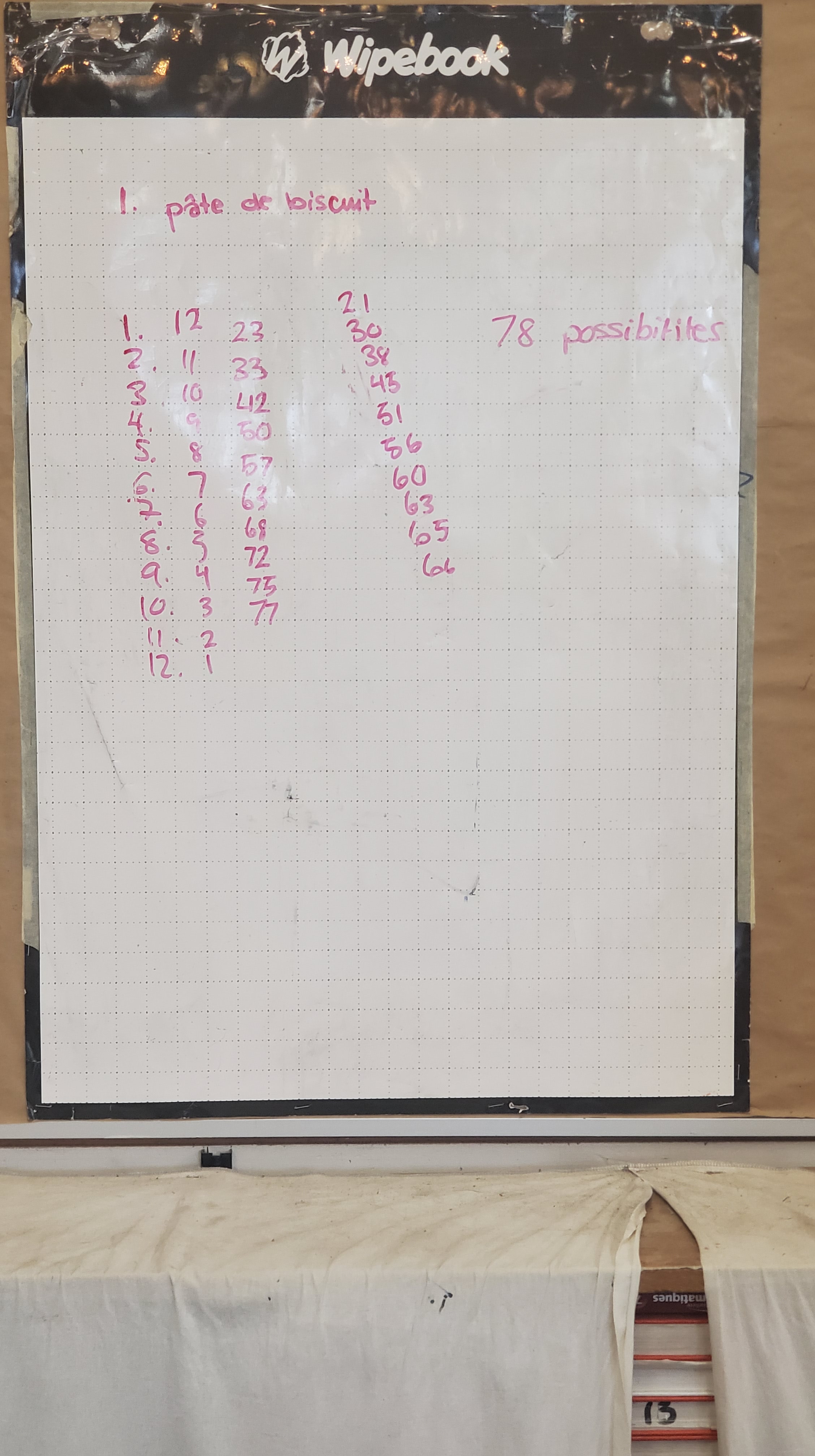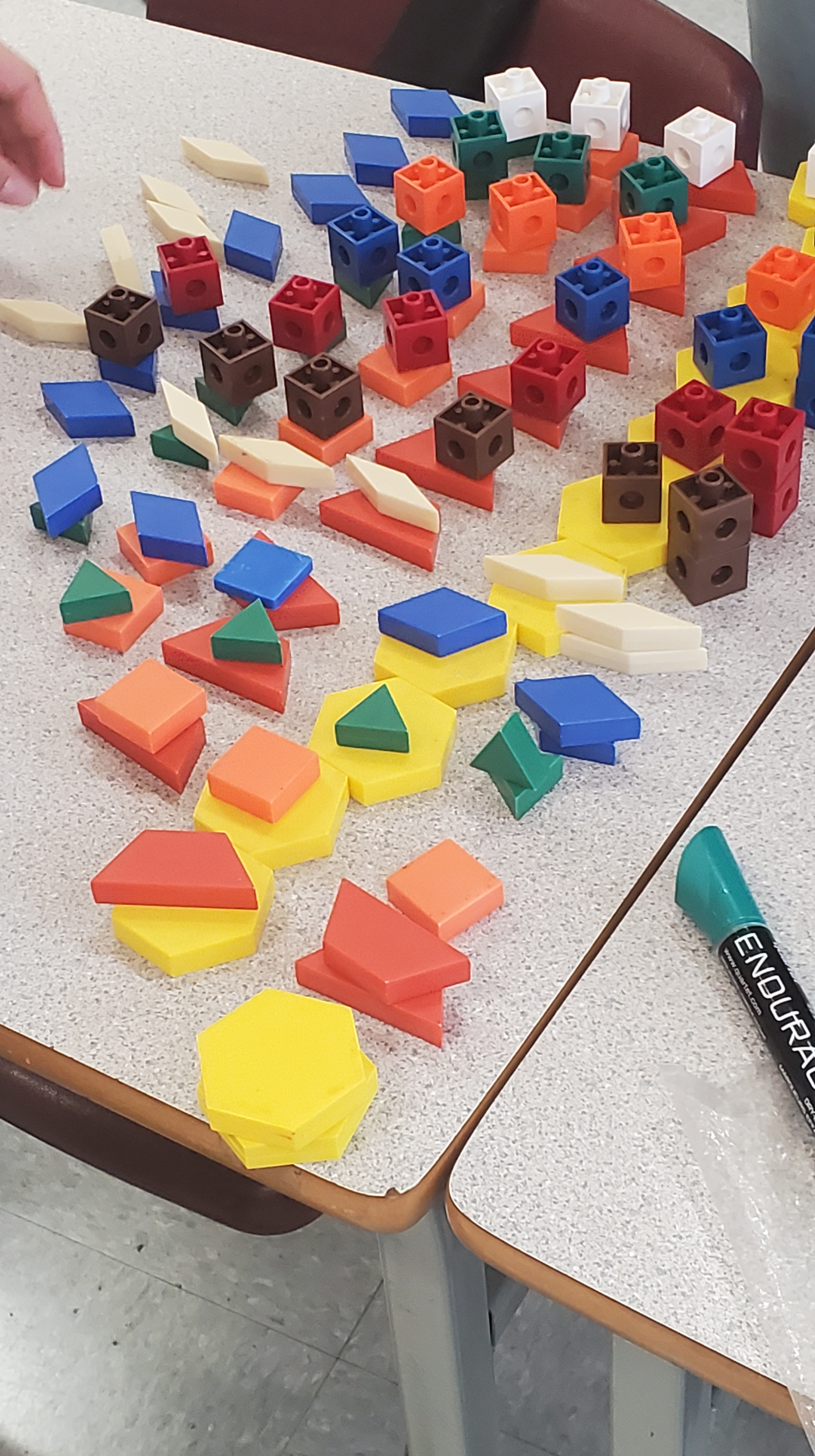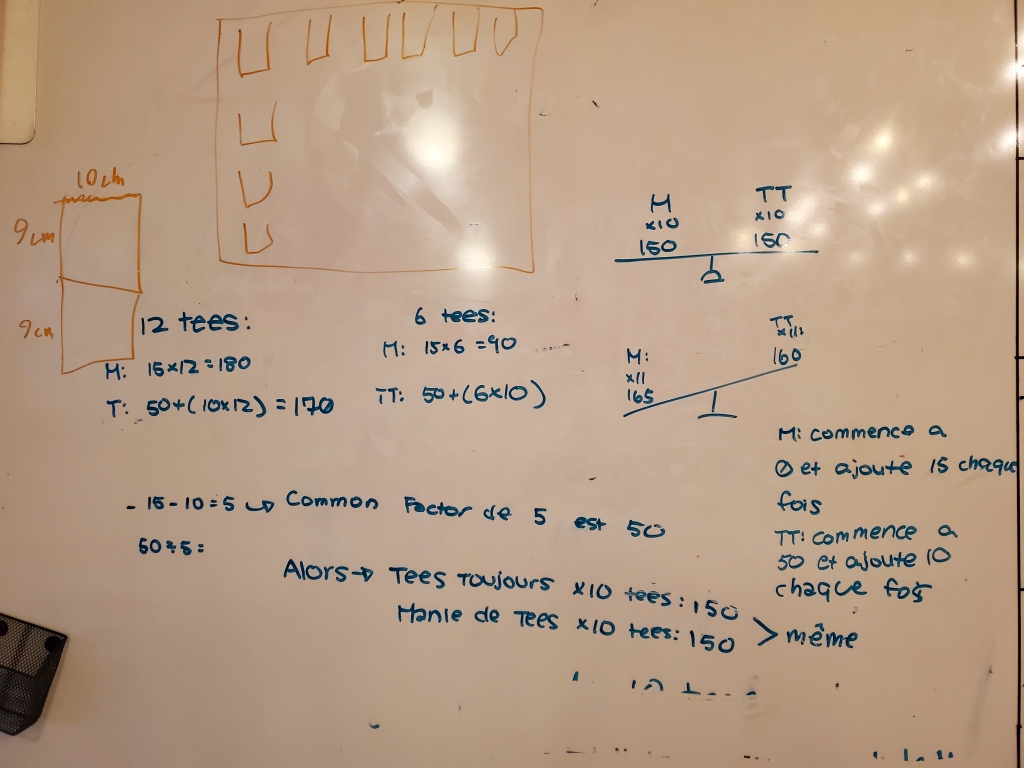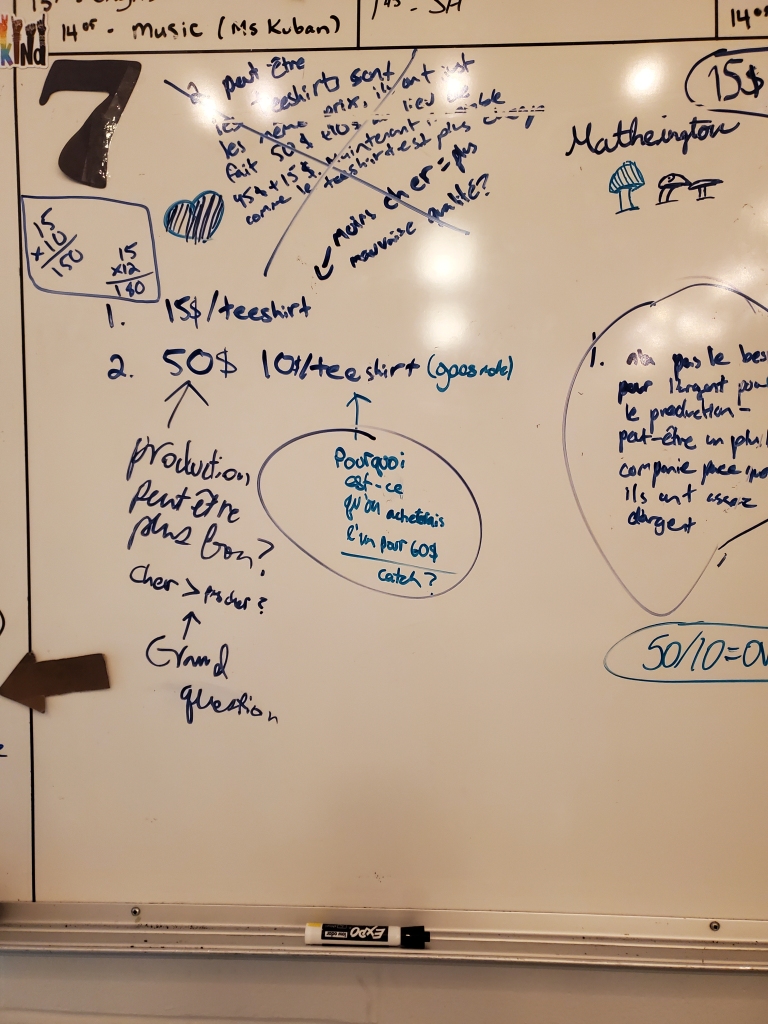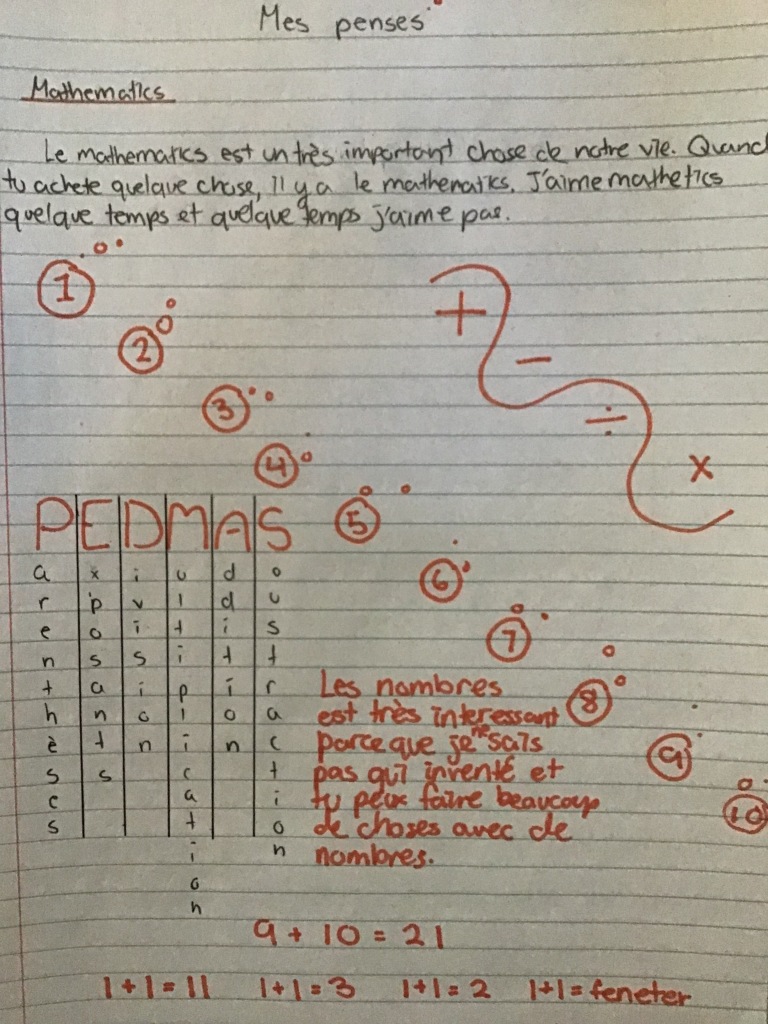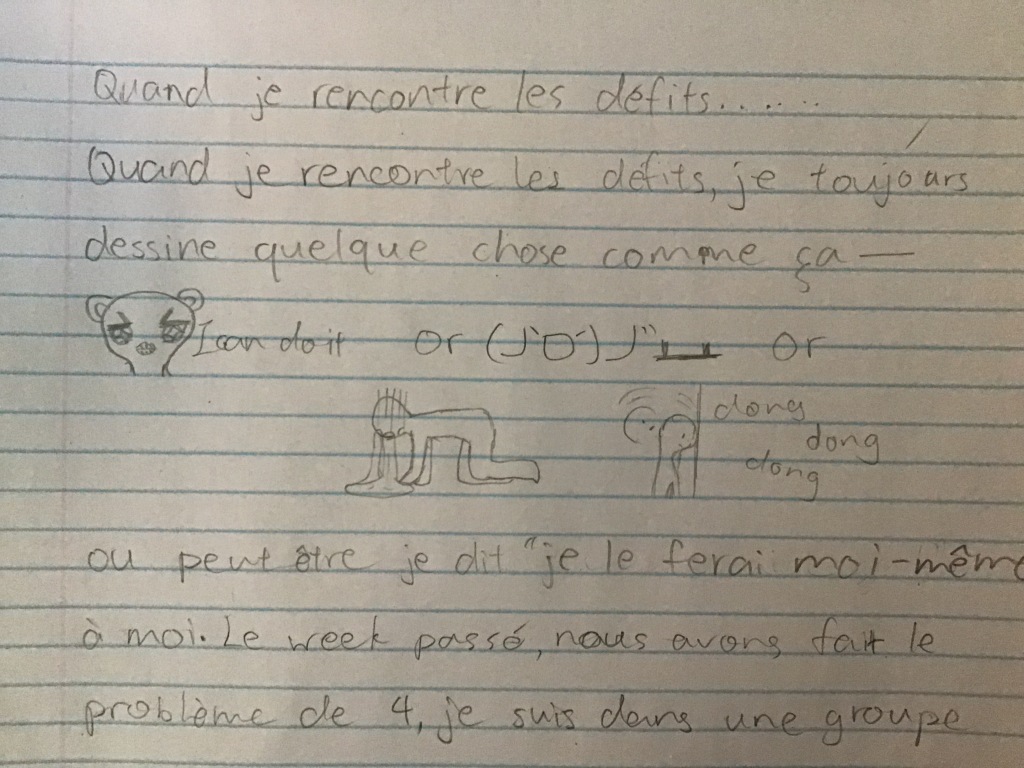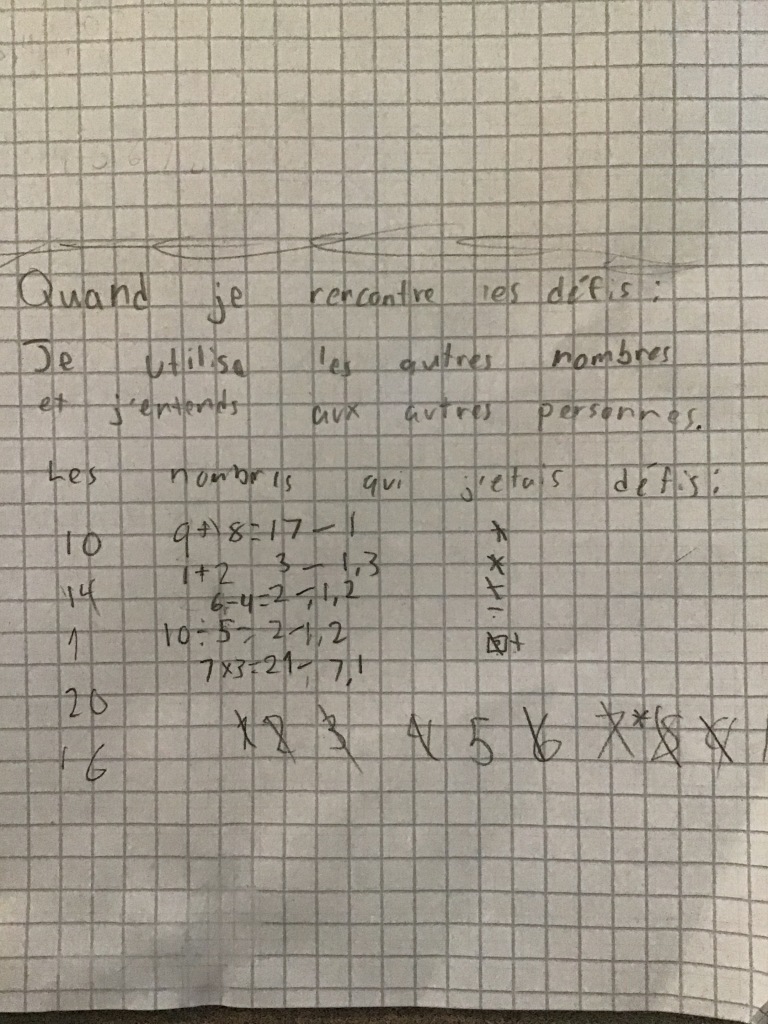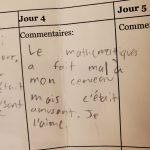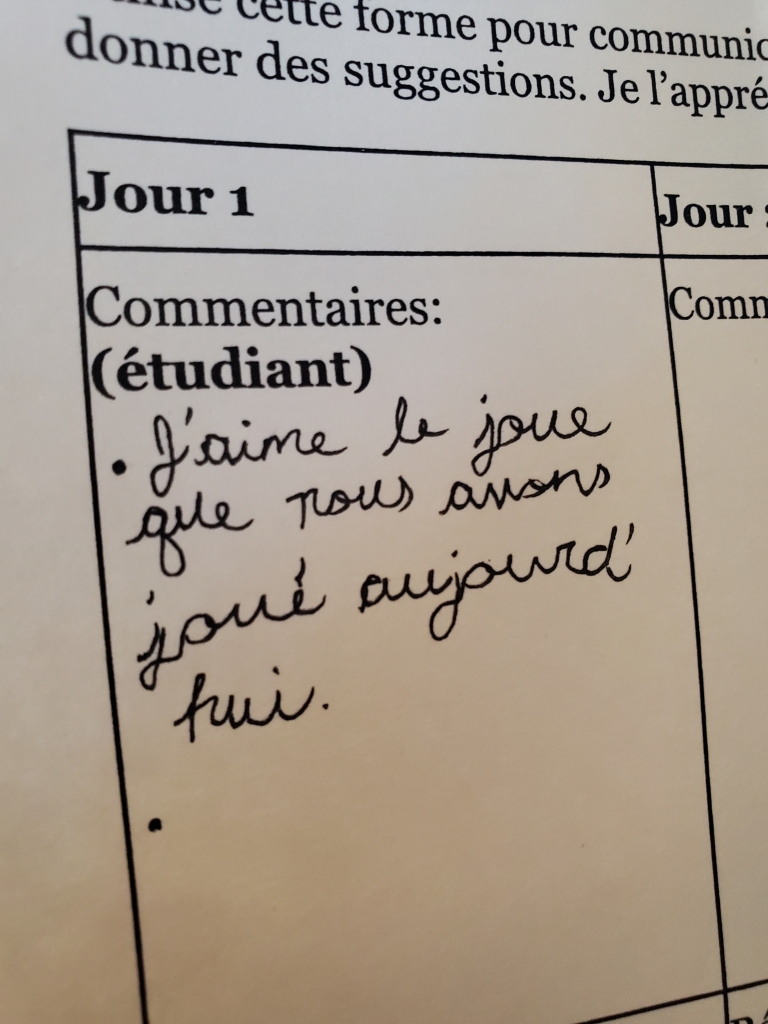Our professional development committee met about the upcoming Pro-D day – the one in one week (yikes! September is so busy!) With so little time restricting our options, I offered to host a workshop on Building Thinking Classrooms. I figured it would be good practice for me, since I need to prepare one for the Northwest Mathematics Conference in October. I convinced a few other committee members to share the awesome stuff they are doing in their rooms too.
I’m glad I did this, because I wasn’t too sure how to plan for a workshop. I assume it’s a lot like teaching – have a big idea in mind, know your stuff, be prepared to pivot depending on need. I ended up making my husband listen to me for a while, which helped me figure out what I wanted to say and in what order.
Preparation
The day before the presentation I peeked into the band room. There were two whiteboards, and one with stuff written on it. I wanted to avoid erasing the writing, since I’m not sure if the classroom teacher was hoping to save that for Monday. That’s okay, perfect opportunity to show off alternative sources of vertical non-permanent surfaces! I counted the number of accessible windows and borrowed two rolling easels from my neighbour. I spotted a rolling chart paper stand in the band room with a ledge for holding pens, so I propped up one of my shower board white boards on that. I tacked up two Wipebook pages onto the bulletin board, one with the white board facing out, one with the graph side out.
The next morning, I taped up large sheets of tissue paper to the outside of the windows for better visibility of writing, taped up playing cards to all the stations and set up my white board markers and erasers. A few years ago, my husband bought our kiddo a pack of size 6 socks, thinking the 6 meant age, not size – waaaaay to big for her. They make perfect marker holders and whiteboard erasers! I set one at each station. I prepared 12 stations, having no idea how many people would show.
The Presentation
9:15 am rolled around and I had 9 people. I guess 12 stations was a bit excessive – ha! Luckily, as people gathered around me for the start of the first task, six more people showed up. I love that the numbers worked out to only have groups of three! I picked The Answers Are as a task because I remember experiencing it at a workshop and loved the challenge.
My colleagues were fantastic at giving me opportunity to model and talk about teacher moves. I overheard one of the participants say, “You have to start with division for this one. You can’t use division for a lot of these.” It gave me a chance to walk around to other groups and give hints that increase ability (“Hey, I overheard this strategy. What do you think of that?“). As some groups started to solve the first problem, it gave me a chance to practice giving hints that decrease challenge (“What if I told you that this one (9-1) is correct?“). I stopped them after 15 minutes, and, as one always hopes for, they were not all pleased to leave the task. My presenter heart was also very happy to watch the taking pictures of the task or copying down the numbers.
I had decided to present BTC by breaking down ideas into toolkits. After exploring toolkit 1, I asked teachers to write down questions they had or takeaways. Two of takeaways included the socks and taping white tissue paper to the outside of the windows – teachers, we’re always practical!
After presenting the second toolkit, I launched another task – the Unusual Baker. In advance, I had enlarged and photocopied the task from Peter’s Building Thinking Classrooms in Mathematics book. I had strips of prompts – #1-5 on one strip, #6-10 on another. I had thought to walk around cutting off the questions one at a time, but due to time constraints, I just handed the strips out at need. To launch the task, I told a story of how I used to bribe my kiddo to leave daycare by going to the bakery across the street (true), and how one of her favourite people was one of the staff members, Heidi, who ended up being called, “Baker Baker” (also true). Then I explained that Baker Baker gets bored and loves to cut up her square $10 cakes in different ways every day (not true, I think…) I drew the first two cakes and asked participants how much each slice costs.
Off they went. I was able to model teacher moves about incorporating fractions and ways of thinking about them (“Oh. So this is half the cake? And this is a quarter? So, is a quarter of a cake half of a half?”). One group ended up trying to anticipate the questions, and started dividing their cakes in unusual ways, like thirds. It gave me a chance to talk about differentiation, and how we can do that by giving different hints and extensions (in their case, I asked them what Baker Baker should charge to avoid having to ask for $3.33 a slice). We consolidated again, which made it easier to anchor talking about the next toolkit.
I did a brief talk on toolkit 4, as I decided to follow Peter’s wise advice about not talking about assessment on the first date. “Come chat with me when you’re ready,” I invited them.
It ended and I felt good. Lots of lovely feedback about how engaging it was, and of course, some of my amazing colleagues stayed to help me take down the whiteboards and gather markers. Several shared that they plan on trying to some these things on Monday, which is so amazing. YES!







